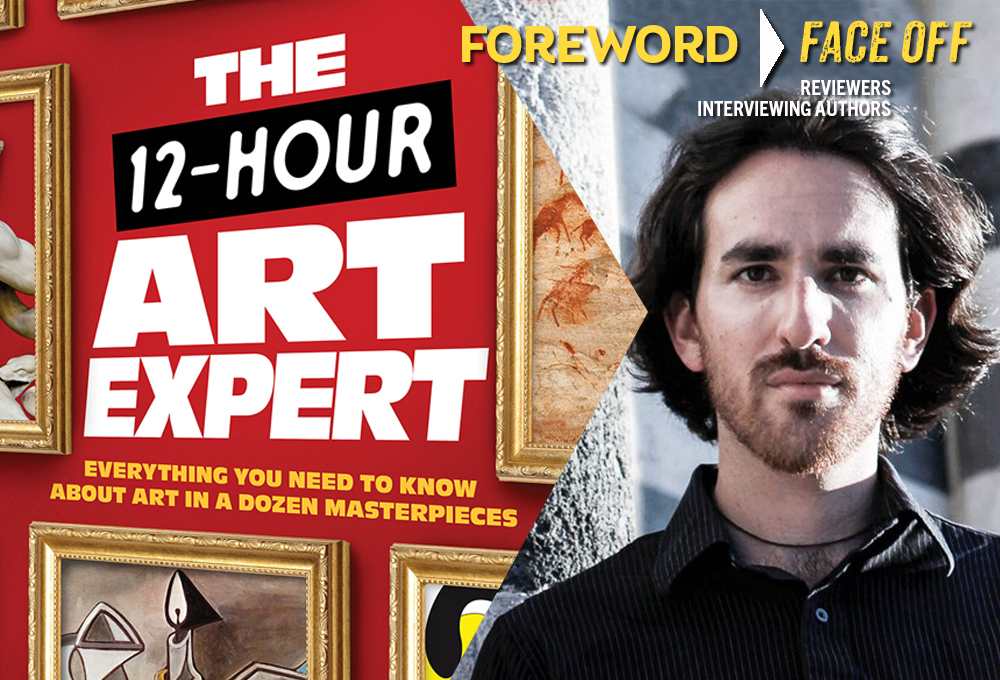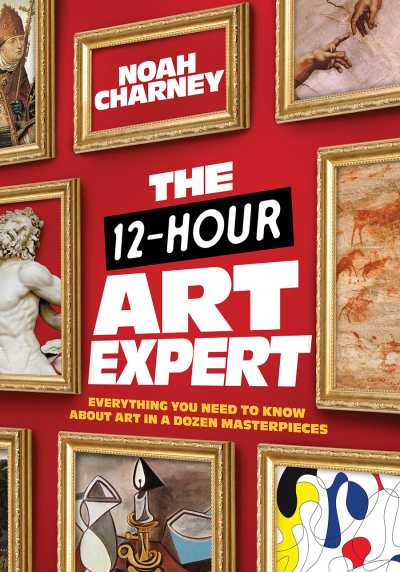Reviewer Jeff Fleischer Interviews Noah Charney, Author of The 12-Hour Art Expert: Everything You Need to Know about Art in Dozen Masterpieces

Playacting is a skill we all use on occasion, but there’s something about art museums that brings out the Brando in us—head cocked, chin in hand, gazing contemplatively at a supposed masterpiece, thinking, “What the hell is that all about?”

Noah Charney’s got ya covered. His The 12-Hour Art Expert is exactly what you need to move you out of pretender status. Reviewer Jeff Fleischer covered the book for Foreword’s July/August issue and we worked with Rowman & Littlefield to bring you this insider interview.
And check out our latest Petít Foreword interview Managing Editor Danielle Ballantyne conducted with Samantha Fey, author of The Awake Dreamer.
What was the specific inspiration to write the book and how to tailor it to its audience?
I’m constantly struck by this disconnect: people are intrigued by art, but also intimidated by it, afraid they won’t “get it” and therefore afraid to engage, or even worse, dismissive of art in general. So my goal with this book is to provide the one book someone should get to introduce them to art in an engaging, down-to-earth way. If you buy only one book about art and its history, this is the one.
While the subtitle highlights twelve masterpieces, the book discusses many more and gives a wide overview of the field. How did you select the twelve works around which you framed the discussion?
This was the toughest thing to do, as I could have chosen so many different focal works. The basic idea is reductionism: take a big, complicated concept or field of study and boil it down to the most basic, concise version of it. Then through that simplified approach, you can learn all those complexities. I wound up choosing focal works through which I could tell the stories, teach the lessons, I wanted to. But I could have easily swapped in others. This isn’t a “magic 12” and I’d encourage readers to come up with an alternative list.
The idea is that, instead of trying to learn all there is about hundreds of works, as is common in Art History 101 classes and textbooks, I can teach you all the same material using 12 focal works. I wind up referencing others, of course, but if you understand these 12, you will be empowered to interpret just about any other work you could encounter.
The book includes sections on iconography and symbolism in art. In your own experience, what pieces did you appreciate more after learning about or discovering these additional meanings?
Iconography, the study of symbols, is my favorite aspect of art history. I think of pictures as visual riddles, puzzles that artists have created as a game for us to solve. You need a bit of a priori knowledge, but not much. Once you have the basic vocabulary of visual symbols you can interpret I’d say 80 percent of any artwork you might encounter in the European tradition. For me, the most exciting works are Jan van Eyck’s Adoration of the Mystic Lamb (which I’ve written a whole book on) and Bronzino’s Allegory of Love and Lust (my favorite painting). Both are painted cryptograms that still need to be fully solved. Then there are works that are barely understood at all, puzzles with only a few pieces in place, like Bellini’s Sacred Allegory. There are no definitive interpretations of it. The game is on!
What were the biggest challenges in trying to cover an introduction to centuries of art in one book?
Being concise is always harder than writing expansively. But it helps the reader immensely. I could write a longer book far more easily, but I had to be super selective. So carefully choosing lessons, anecdotes, and writing them in an engaging but short way was the toughest aspect.
You’ve written a lot about art theft and some of the intriguing mysteries around lost art. How did you get interested in that aspect of the field?
It all started when I was living in London, trying to be a playwright. I got a literary agent, but she said, “The plays are fine, but if you want to make a living as a writer, you should write a novel. Have you got one?” No, I replied, but I’ll go and write one. This was shortly after The Da Vinci Code had come out. I enjoyed it, and admired its sales, but was annoyed with all the art and historical facts it just got wrong, or used misleadingly. I wanted to write something with a similar must-read feel to it, but with entirely accurate information and scholarly research. I was studying art and had experience in the art field, so I thought setting a mystery behind the scenes there would be interesting.
The Thomas Crown Affair also came out around that time, and it was so stylish, I thought it would be fun to write a novel that would have some of the same flair. I wrote a novel, The Art Thief. It is my only published novel to date—all my other fifteen-plus books are non-fiction. But I was lucky and it got a lot of press and became an international bestseller. It allowed me to become a full-time writer. While researching it, I realized that there was very little in terms of published scholarship on art crime. So I shifted gears and went from studying art history to studying the history of art theft. I was lucky enough to be profiled in The New York Times Magazine as having effectively founded the field of the study of art crime, and that really helped launch things. I then founded ARCA, the Association for Research into Crimes against Art, the world’s first research group in this field (www.artcrimeresearch.org). And though I wasn’t yet thirty, and hadn’t even finished my PhD, I was suddenly the go-to expert in the field, teaching a seminar in art crime at Yale University and appearing on TV, radio, and in the media as the resident specialist.
You touch on the future of art, and how concepts like virtual reality and NFTs are changing the art world. What changes are you most excited about in the near future?
Art is always self-referential, looking back to history while moving forward. That’s exciting. I like working with contemporary artists. My latest book is Making It: The Artist’s Survival Guide, written with my best friend, the artist JAŠA, (also published by Rowman & Littlefield). And I just signed the contract for another book for the same publisher, on NFTs and their place in the history of art and collecting.
What do you most hope the audience comes away with after reading The 12-Hour Art Expert?
I hope that people who never thought they would like art, or were secretly afraid of engaging, will read this book and have a beautiful, intriguing world opened up to them. May my book be the ice-breaker, the first of many art books for those who don’t yet have art in their lives!
Jeff Fleischer
